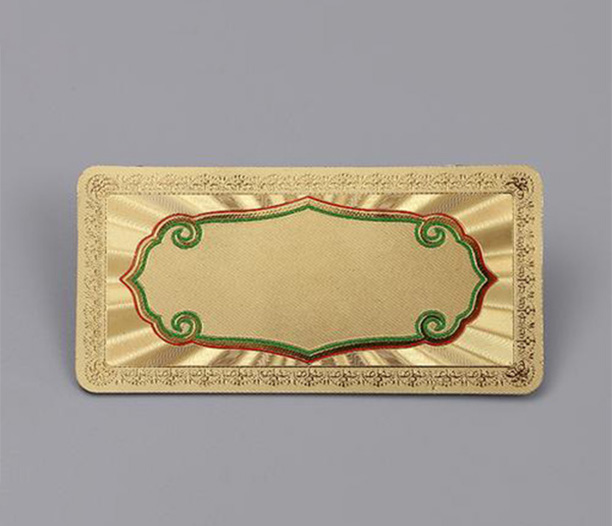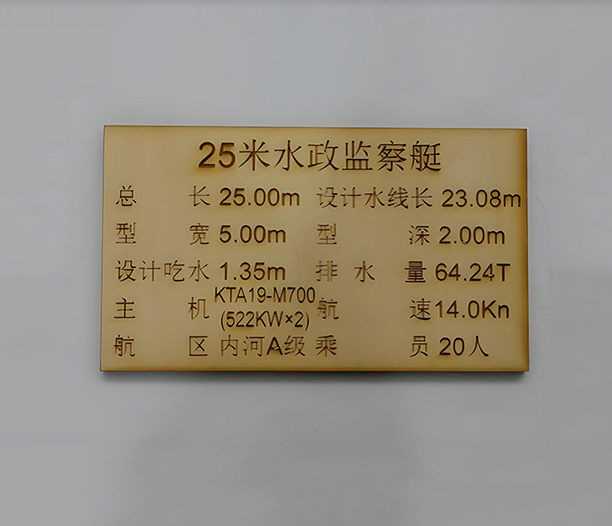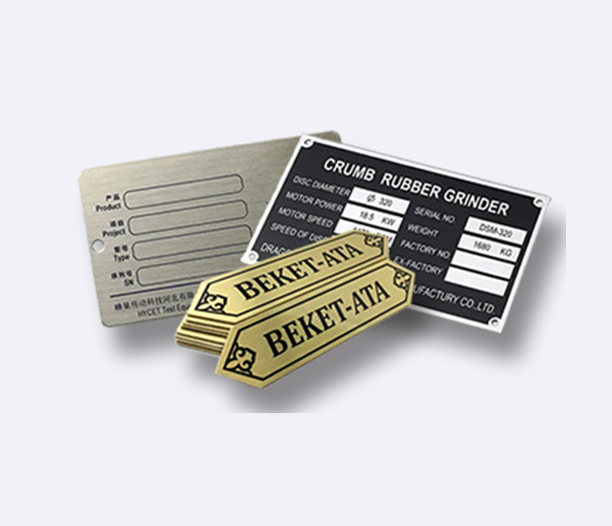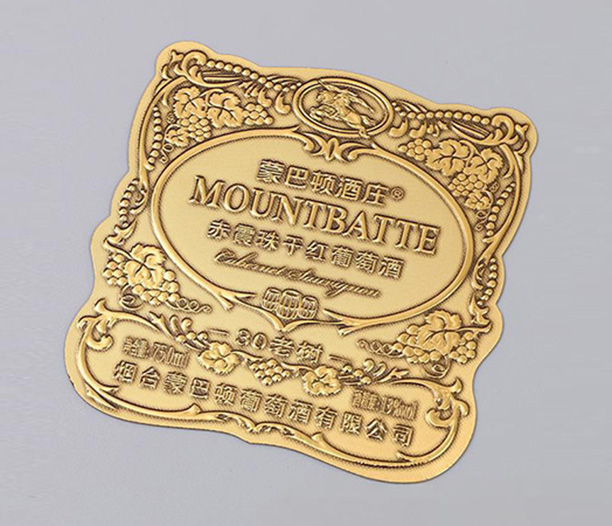Alright, let's cut to the chase. You're sourcing nameplates, labels, or tags for your product, equipment, or facility. Durability is non-negotiable. You need identification that lasts, maybe even outlives the thing it's labeling. You've heard aluminum nameplates are tough, but the big question hangs in the air: "Just how long DO aluminum nameplates actually last?"
Buckle up, because the answer might genuinely surprise you. We're not talking years here. We're talking decades, potentially even half a century or more under the right conditions. Yeah, you read that right. Let's break down why these metal workhorses are the undisputed champions of long-term identification.
1. The Core Advantage: Aluminum's Built-In Superpowers
The longevity of an Aluminum Nameplate starts with the metal itself. Aluminum possesses some killer inherent properties:
- Corrosion Resistance Champion: This is the big one. Aluminum naturally forms an incredibly thin, invisible layer of aluminum oxide when exposed to air. This layer? It's super tough and self-repairing. Unlike steel, which rusts and flakes away, this oxide layer acts like a force field, protecting the core metal beneath. That's why you see aluminum used everywhere from soda cans to aircraft fuselages – it handles environmental punishment.
- Lightweight Yet Mighty: Pound for pound, aluminum offers fantastic strength. An Aluminum Nameplate won't weigh down your product but can withstand significant physical stress – bumps, vibrations, and general handling that would crack or warp flimsier materials.
- Elemental Endurance: Aluminum laughs in the face of UV rays. It won't fade, become brittle, or disintegrate like plastics exposed to constant sunlight. It also handles a wide range of temperatures far better than most polymers.
These aren't just lab claims; this is real-world chemistry and physics working in your favor for decades.

2. Leveling Up: The Magic of Anodizing
While bare aluminum is decently tough, the real game-changer for maximizing the lifespan of an Aluminum Nameplate is anodizing. This electrochemical process isn't just a pretty finish; it fundamentally enhances the metal.
- Thicker, Harder, Better: Anodizing artificially thickens that natural oxide layer. We're talking about creating a surface significantly harder than raw aluminum – approaching the hardness of sapphire! This makes the nameplate incredibly resistant to scratches, abrasion, and everyday wear and tear.
- Corrosion Resistance on Steroids: That thickened anodic layer is dense and non-conductive, providing exponentially better protection against salt spray, harsh chemicals, acids, alkalis, and industrial pollutants than bare metal. Think marine environments, chemical plants, or outdoor equipment exposed to de-icing salts – places where lesser labels fail fast.
- Unshakeable Bond: The ink or graphics used on anodized aluminum nameplates (often via screen printing or etching) don't just sit on top; they bond into the microscopic pores of the anodic layer before it's sealed. This creates a bond so strong the graphics become virtually part of the metal itself. You won't see peeling, flaking, or fading like you get with stickers or labels glued onto surfaces.
3. The Lifespan Revelation: Decades, Not Years
So, back to the burning question: How long do aluminum nameplates last? Here's the reality check that often surprises people:
- Industry Standard Expectations: A high-quality, anodized Aluminum Nameplate, properly manufactured and specified for its environment, is routinely expected to last 25-50 years without significant degradation. That's not marketing fluff; it's based on decades of real-world performance and accelerated aging tests (like salt spray testing per ASTM B117).
- The "Surprise" Factor: For many, especially those used to vinyl labels lasting maybe 5-10 years outdoors or cheaper metal tags corroding, hearing "25-50 years minimum" is a genuine eye-opener. It shifts the Aluminum Nameplate from a component to a near-permanent asset.
- Pushing the Boundaries: Under optimal conditions – think moderate indoor environments or protected outdoor locations – anodized aluminum nameplates can easily last 50+ years, even approaching 100 years. Evidence? Look at mid-20th-century industrial equipment, vintage aircraft instrumentation, or legacy telecommunications gear – the aluminum nameplates are often still perfectly legible and intact, long after other parts have been replaced or retired.
4. Why Cheap Alternatives Fall Short (Fast)
Understanding the lifespan of an Aluminum Nameplate becomes clearer when you compare it to common alternatives:
- Vinyl/Polyester Labels: Great for short-term or indoor use, but UV fades them, moisture makes them peel, chemicals dissolve them, and physical abrasion destroys them. Lifespan? Often 2-10 years outdoors, less in harsh conditions.
- Stainless Steel Tags: Definitely durable and corrosion-resistant. However, they are significantly heavier and much more expensive than aluminum. They can also be harder to mark with certain processes. While long-lasting, the cost/benefit often favors aluminum for most applications.
- Brass/Bronze Plates: Offer a classic look and good corrosion resistance, but they tarnish heavily and require frequent polishing to maintain appearance. They are also generally more expensive than aluminum. The patina isn't always desirable for clear identification.
- Screen Printed or Painted Metal: Without the protective anodic layer of an Aluminum Nameplate, the graphics are vulnerable to chipping, scratching, and chemical attack, drastically reducing effective lifespan.
The Aluminum Nameplate hits the sweet spot: exceptional longevity rivaling premium metals, at a cost closer to polymers, with unbeatable lightweight versatility.
5. More Than Just Longevity: The Total Value Proposition
The incredible lifespan of an Aluminum Nameplate is just the start. Its durability translates into tangible value that boosts your bottom line:
- Lower Total Cost of Ownership (TCO): Sure, an anodized aluminum plate costs more upfront than a vinyl sticker. But when that sticker needs replacing every 3-5 years (plus labor costs for removal and reapplication), while the aluminum nameplate keeps going strong for decades, the aluminum becomes the far more economical choice over the product's life. It's an investment, not just an expense.
- Uncompromised Legibility & Safety: Critical information – warnings, serial numbers, model numbers, ratings, instructions – must remain readable for the life of the asset. A faded, peeling, or missing label isn't just annoying; it can be a safety hazard, a regulatory violation, and a maintenance nightmare. The longevity of an Aluminum Nameplate ensures vital information is always present and clear.
- Preserving Brand Integrity & Professionalism: A worn-out, faded label makes even high-quality equipment look old and poorly maintained. A crisp, intact Aluminum Nameplate projects professionalism, quality, and attention to detail for the entire lifespan of your product. It silently reinforces your brand's value.
- Reduced Waste & Sustainability: Choosing a solution that lasts decades means significantly fewer replacements ending up in landfills. Aluminum is also highly recyclable at end-of-life, making the Aluminum Nameplate a more environmentally conscious choice compared to disposable labels.
6. Maximizing Your Aluminum Nameplate's Lifespan: Smart Spec'ing
While inherently long-lived, you can ensure your Aluminum Nameplate reaches its maximum potential by specifying it correctly:
- Anodizing Type & Thickness: For harsh environments (outdoor, chemical, marine, high abrasion), specify hardcoat anodizing. It creates the thickest, hardest, most protective layer. Discuss the appropriate thickness (measured in microns) with your supplier based on the expected conditions. Don't skimp here!
- Sealing Matters: After anodizing and marking, the plate must be properly sealed to close the pores in the anodic layer. This locks in the graphics and maximizes corrosion resistance. Ensure your supplier uses a high-quality sealing process (often hot water or nickel acetate).
- Appropriate Marking Method: For ultimate permanence, etched graphics (where the mark is physically cut into the anodic layer) or high-quality screen printing with durable inks designed for anodized aluminum are best. Laser marking can also be very durable if it creates a deep enough contrast.
- Smart Design: Avoid designs with super-fine details or ultra-thin lines that could potentially wear down over extreme decades. Ensure adequate contrast for readability.

7. The Verdict: Prepare to Be Impressed
So, how long do aluminum nameplates last? Forget what you thought you knew about product labels. We're not measuring their lifespan in mere years. We're measuring it in decades – 25, 50, potentially even approaching 100 years for a properly specified anodized Aluminum Nameplate.
That’s the real surprise for many: the sheer, almost unbelievable longevity packed into this lightweight, versatile, and cost-effective solution. It's not just a label; it's a permanent part of your product's identity and legacy.
When you need identification that absolutely must endure – through relentless sun, punishing rain, corrosive chemicals, abrasive wear, and the simple passage of time – the answer is clear. Invest in a high-quality Aluminum Nameplate. Specify it smartly with anodizing. Then install it, forget about replacing it for decades, and let the surprise of its enduring performance be a testament to your smart choice. It’s the ultimate "set it and forget it" solution for critical identification. Now that's long-term value.






